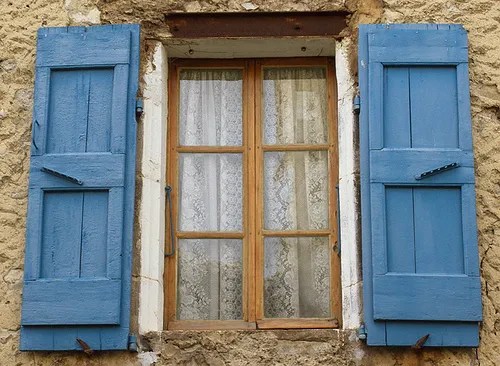For generations, people have selected wood shutters for their windows because of the durability, classic style and easy maintenance that shutters provide. They are frequently thought of as a standard fixture on historical buildings worldwide. Although shutters are in use almost universally, it is difficult to determine the exact historical origins of the use of shutters.
Shutters first used in ancient Greece
It is commonly believed that shutters were first used in ancient Greece in order to provide light control, ventilation and protection in that tropical environment. Those first shutters were likely constructed with fixed louvre's made out of marble. Eventually, the concept of shutters spread throughout the Mediterranean, and the form began to change. Wood started to replace marble as a more suitable material for production, and designers started developing movable louvre shutters to allow varying amounts of light and air into a room.
Shutters Bi-functional
Shutters generally performed two functions; admitting light and ventilation. Louvred shutters could be closed to minimise heat from the sun and simultaneously allow for ventilation and privacy when needed. With the louvres
pointed in the downward direction, the shutters also shed rainwater. Solid shutters provided more insulation and were able to prevent insects from entering the home.
Shutters Security and Protection
In medieval Europe, houses had rectangular windows with solid shutters that sometimes closed with a large iron bar for security and protection. By Tudor and Elizabethan times, glass windows started to be used, but they were very expensive, therefore reserved for the upper half of window openings. Solid shutters below the sash, windows remained closed with solid shutters. Hinged glazed sashes started replacing the solid shutters in the 15th century. After that point, interior shutters were increasingly used as decoration in homes rather than strictly functional purposes. Woodwork like window shutters and mouldings became the main decorative elements in smaller houses in early 18th century England.
As wood construction started to be used for houses in the Victorian period, people started using shutters outdoors. The stone and brick houses built previously had deeper recessed windows that prohibited the use of exterior shutters because they would be unreachable from the inside. However, the thinner wooden walls allowed indoor access to exterior shutters.
Shutters and the Spanish in the New World
As the Spanish started colonising the Americas, they brought shutters to the New World. Decadent mansions in the South used shutters, and the term 'plantation shutters' is derived from this area. Plantation shutters on cotton plantations usually had wider louvres than shutters used earlier, and they were almost always painted white. Traditional shutters often found in the New England states trace their roots to England, where the narrower louvre was used. Often café type shutters mimic the original use of shutters on the bottom portion of windows before glass was affordable.
